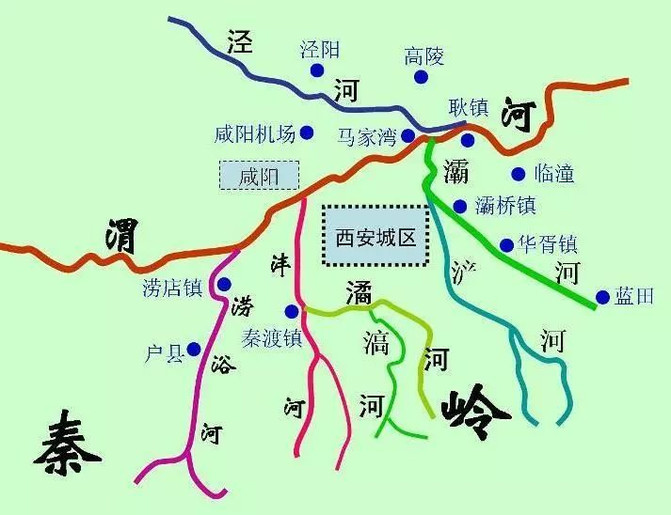Why is there a saying that eight rivers surround Chang 'an in inland cities? In addition to Jingwei Chanba, the rest are more famous
If someone asks you, what are the eight rivers around Chang 'an? Many people may only answer the four questions: Jinghe River, Weihe River, Chanhe River and Bahe River, but they don't know which four are left. In ancient times, almost all poets who arrived in Chang 'an City would praise it,"Five original waters empty barriers, and eight rivers disperse wind and waves." The so-called "eight waters" actually do not refer to natural water, but the concept of cultural water. People have always had a beautiful memory of the eight rivers circling Chang' an, but unfortunately, with time and time, some rivers have dried up now, and the river flow is not as good as before. In recent years, Xi'an has actively implemented measures to restore urban ecology, and the scene of eight rivers circling Chang' an will appear in the future.

As the mother river of the Guanzhong area, the Wei River runs through the entire Guanzhong Plain, with many historic sites scattered along the coast. The northern end of the Wei River in Shaanxi flows through the high loess slope of northern Shaanxi, which causes the water of the Wei River to carry a large amount of sediment and the water quality is relatively turbid. At the intersection of the Wei River and the Jing River, there is the source of the idiom "Jingwei River is the largest tributary of the Wei River, with a drainage area of 45,421 square kilometers. In ancient times, although the Jing River was far away from Chang 'an City, it was economically but has a close relationship.

The Feng River is also called Fengshui. The famous Kunming Pond during the Han and Tang Dynasties was formed based on the Feng River. Among them, the Gaoguan River, the Yan River and the Taiping River are all tributaries of the Feng River. The Feng River Basin is also one of the birthplaces of Chinese civilization. According to records, In history, the Feng River was flooded, and Dayu once managed the Feng River. The water of Qujiang Pond, Taiye Pond, and Xingqing Pond in Chang 'an City in Tang Dynasty was all led from the Chan River, which flowed between Shaoling Plateau and Bailuyuan, and originated from the Qinling Mountains. The original name of the Bahe River was Zishui. According to legend, during the Spring and Autumn Period, Duke Mu of Qin changed the Zishui River to Bashui River in order to show his majesty. The Bashui River ran parallel to the Chan River, then merged in Lanyu and other places, and finally entered the Wei River near Guangtai Temple.

In addition to these four rivers that are relatively common to the public, there are also four rivers that are not mentioned much in people's lives. The Orange River, a rare river, has had a deep influence on Chang 'an City in history. The source of the Orange River flows out of Dayi Valley in the Qinling Mountains and flows north for more than 10 kilometers. Water flows such as Xiaoyi Valley and Baidao Valley are gathered along the way. About 20 kilometers southwest of Xi'an City, the water source of the water flows from the Shigu Valley in the Qinling Mountains. This is the source of the water from Yong' an Canal in Chang 'an City. The water reaches Xiangji Temple and joins the water, also known as Fushui. The Laohe River was called Laoshui in ancient times. The biggest feature of the Laohe River is that it has two sources, one east and one west. After the two rivers meet, they flow into the Wei River through Xianyang in the north.

These eight rivers flow around Chang 'an City. These "eight rivers" are not only natural river courses, but also form a thorough agricultural irrigation network that nourishes the fertile soil near Chang' an City. In the Tang Dynasty, these "eight rivers" are even more important to Chang 'an's Urban area water supply system. It is not surprising that Xi'an was the ancient capital of the 13th Dynasties.
Previous Article:A small tourist attraction in Xi'an, where the giant panda was discovered in the bird, once cost a ticket of 60 yuan, but now it is free to play
Next Article:How complicated is it to obtain an "ID card" for the Terracotta Warriors? This "Qin Feng fever" is fierce
